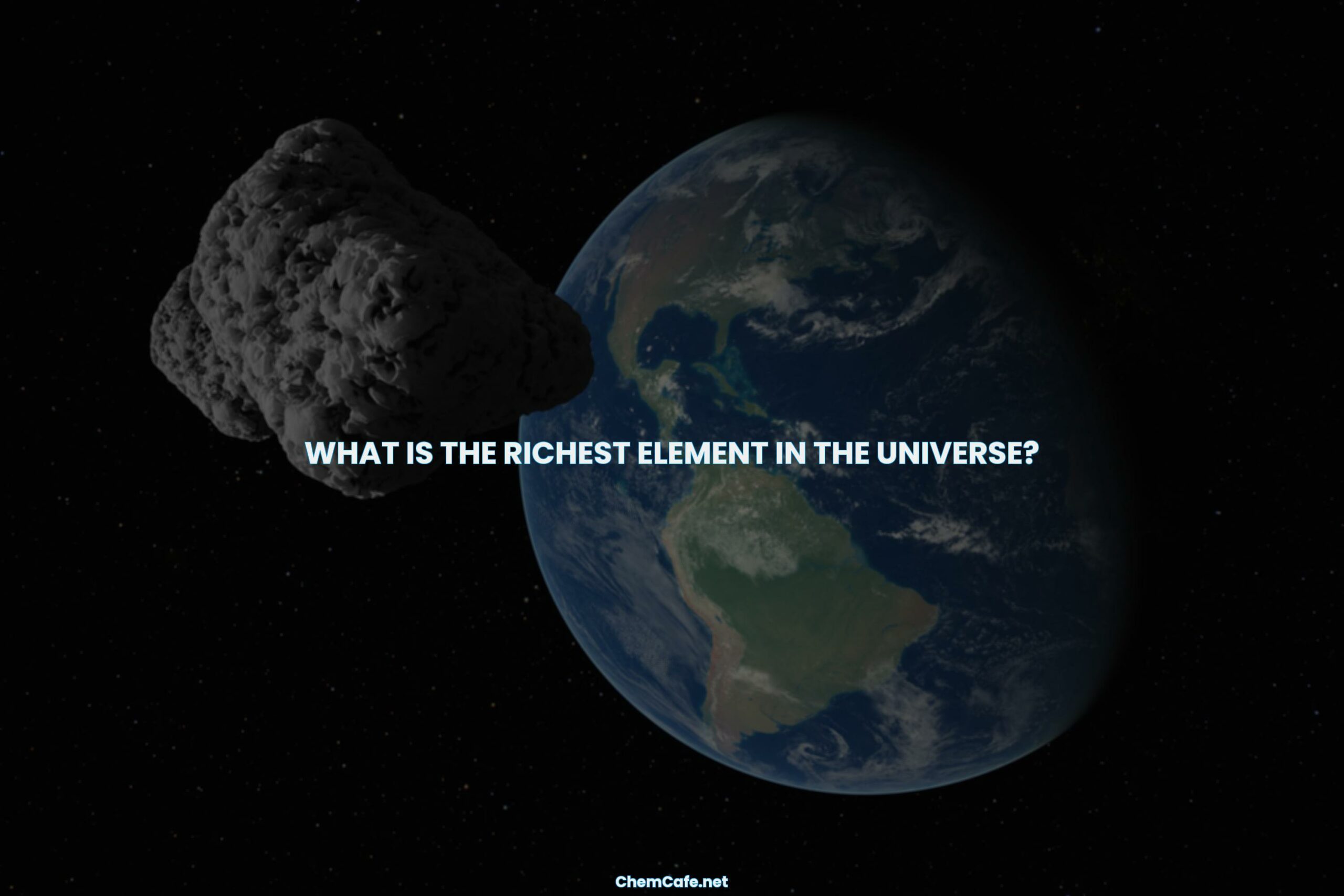The universe is full of fascinating elements, some of which are more valuable than others. While some of these elements are common and can be found on Earth, others are incredibly rare and expensive. One of the most valuable elements is Polonium-209, which is estimated to be worth $49.2 trillion. Not only is it used as a static eliminator, but it also has applications in atomic weapons and in powering satellites and spacecraft.
But Polonium-209 is not the only rare and valuable element in the universe. Francium, the most expensive natural element, is also incredibly rare and can only be found in trace amounts due to its rapid decay rate. Similarly, most rare earth elements come from smuggling operations out of China and the country holds the majority of the world’s reserves.
In addition to these rare and valuable elements, there is also the 200th element, which is oxygen. Oxygen is the fourth most abundant element in the universe and is created through fusion in massive pre-supernova stars. In fact, the sun is very small compared to stars like Arcturus, which is 250 times its size and is able to create carbon, the first element created in stars.
Whether it is Polonium-209, Francium, Rare Earth Elements, Oxygen, or something else, the universe is full of incredible elements. Each of these elements has a unique and valuable purpose, and each one is essential to the universe as a whole. What is the richest element in the universe? The answer is still a mystery, but one thing is for sure: it is sure to be incredibly valuable and incredibly rare.
What is the richest element in the universe?
The universe is full of elements, both natural and man-made, and each element has its own unique properties and uses. But which element is the richest of them all? The answer is not so straightforward as it depends on which aspect of ‘riches’ you are looking at.
Polonium-209
Polonium-209 is the richest element in terms of monetary value. With a price tag of around $49.2 trillion, it is the most expensive natural element in the world. Polonium-209 is used mainly as a static eliminator, but it also has applications in atomic weapons and as a heat source for satellites and spacecraft. Unfortunately, it is also one of the rarest elements available.
Where do 98% of rare earth elements come from?
In terms of abundance, rare earth elements are the richest in the universe. These elements are essential for the production of many modern technologies, such as smartphones and computers. While rare earth elements are naturally occurring, 98% of them are smuggled out of China. This makes China the largest producer of rare earth elements in the world.
Which country has the most rare earth reserves?
Estimates suggest that the total worldwide reserves of rare earths amount to approximately 120 million metric tons. Most of these reserves are located within China, with an estimated 44 million metric tons. After China, the major rare earth countries based on reserve volume are Vietnam, Brazil, and Russia.
Is there a 200th element?
The most common heavy element, oxygen, arises from fusion in massive, pre-supernova stars. The Sun, today, is very small compared to giants, but will grow to the size of Arcturus in its red giant phase, some 250 times its current size. Red giants fuse helium into carbon, which becomes the first element created purely in stars rather than in the Big Bang. Carbon is the 4th most abundant element in the Universe today.
In conclusion, the richest element in the universe depends on which aspect of ‘riches’ you are looking at. Polonium-209 is the most expensive natural element, while rare earth elements are the most abundant. Oxygen is the most common heavy element and carbon is the 4th most abundant element in the universe.
What is the richest element in the world?
The answer to this question is not as straightforward as it may seem. While some elements have a much higher market value than others, their rarity and the difficulty of extracting them from the Earth means that their actual value can be hard to determine.
Polonium-209 ($49.2 trillion)
Polonium-209 is one of the rarest elements in the world, and it is used in various industries. It is commonly used as a static eliminator, and it can also be used for atomic weapons and as a heat source for satellites and spacecraft.
Francium ($1 billion per gram)
Francium is the most expensive natural element in the world. However, it is so rare and it decays so quickly that it cannot be collected for use. It has a half-life of only 22 minutes, and the actual cost of a gram of francium has never even been observed.
Where do 98% of rare earth elements come from?
Most rare earth materials are smuggled out of China, where they are mined and processed. According to estimates, the total worldwide reserves of rare earths amount to approximately 120 million metric tons. Most of these reserves are located within China, estimated at some 44 million metric tons. After China, the major rare earth countries based on reserve volume are Vietnam, Brazil, and Russia.
Is there a 200th element?
Yes, there is a 200th element. This element is called Ununennium, and it is the most recently discovered element. Ununennium is an artificially created element, and it does not occur naturally. It is also the most expensive artificial element, and its cost is estimated to be around $27 million per gram.
When it comes to the richest element in the world, the answer is not as simple as it may seem. While some elements, such as Polonium-209, have a high market value, their rarity and difficulty of extraction make it hard to determine their actual value. Francium is the most expensive natural element, and Ununennium is the most expensive artificially created element. In addition, 98% of rare earth elements come from China, and they are mostly smuggled out of the country. As such, it can be difficult to determine the richest element in the world.
What is the greatest element in the universe?
The universe is composed of many chemical elements, each with its own unique properties and role in the cosmos. But which one is the greatest? Hydrogen is the most abundant element in the universe, making up around 75% of all elemental mass. It is considered the most important fuel that forms and maintains stars, including the sun. It is also the lightest element and the most abundant on Earth.
What is the biggest atom in the universe?
The biggest atom in the universe is Oganesson (Og), which has 118 protons in its nucleus. This atom was generated in an experimental situation and is one of the rarest elements in nature. It is part of the noble gases family, and its atomic number is 118.
8 incredible chemical elements from the periodic table
Hydrogen is the most abundant element in the universe, with an atomic number of 1 and an atomic mass of approximately 1.00 U. Helium is the second most abundant element, making up around 24% of the universe’s elemental mass. Mercury is the third most abundant element, with an atomic mass of 200.59 u. Iridium is a transition metal with an atomic number of 77 and an atomic mass of 192.22 u. Tungsten is a transition metal with an atomic number of 74 and an atomic mass of 183.84 u. Carbon is the basis of life as we know it today and has an atomic number of 6 and an atomic mass of 12.0107 u. Uranium is a heavy metal with an atomic number of 92 and an atomic mass of 238.03 u. Ununoctium is an element with an atomic number of 118, and it is the heaviest element in the periodic table.
What are the main elements?
The main elements in the universe are carbon, oxygen, hydrogen and nitrogen. These elements are the most abundant in the universe and make up most of the matter. Carbon is the basis of life as we know it today, while oxygen makes up around 21% of the universe’s elemental mass. Hydrogen is the most abundant element in the universe, while nitrogen makes up around 4% of the universe’s elemental mass.
What is Liver Fire?
Liver Fire is a term used in traditional Chinese medicine to describe an imbalance between the body’s Yin and Yang energies. It is believed that when the Yin and Yang energies are not in balance, the Liver becomes overactive and produces too much heat, resulting in an imbalance that can cause a variety of symptoms such as headaches, nausea, and digestive problems.
Conclusion
Hydrogen is the most abundant element in the universe and is considered the most important fuel to form and maintain the stars, including the sun. It is the lightest element and the most abundant on Earth, making it the greatest element in the universe. Oganesson is the biggest atom in the universe, with 118 protons in its nucleus. Carbon, oxygen, hydrogen and nitrogen are the most common elements in the universe and are the basis of life as we know it today. Liver Fire is an imbalance between the Yin and Yang energies in traditional Chinese medicine, which can lead to a variety of symptoms. All these elements are part of the incredible complexity of the universe and all have an important role to play in our understanding of it.
What is the most expensive element?
The answer is not as straightforward as you might think. While gold is often considered to be the most valuable element, it is not the most expensive one. The most expensive natural element is francium. However, it is so rare that it has never been collected for commercial use.
Most Expensive Natural Element
Francium is an alkali metal and the second-heaviest element in the periodic table. Due to its high radioactivity, it decays so quickly that it can’t be collected for sale. However, a few atoms of francium have been produced commercially. If you wanted to purchase 100 grams of francium, you could expect to pay a few billion U.S. dollars for it.
Californium is the second-most expensive natural element. It is estimated to cost around $2.7 billion per 100 grams. This is significantly more than the cost of plutonium, which runs between $5,000 and $13,000 per 100 grams, depending on purity.
Fast Facts: The Most Expensive Natural Elements
Here are some fast facts about the most expensive natural elements:
- The most expensive natural element is francium, but it decays so quickly it can’t be collected to be sold.
- The value of gold is currently about $65 per gram, but its value fluctuates depending on political and economic certainty.
- The rarer the element, the more expensive it is.
- The 10 most expensive elements on earth are: Francium, Californium, Carbon (pink diamond), Carbon (white diamond), Tritium, Lutetium, Painite, Plutonium, Scandium, and Gold.
- The most expensive element on the list is Francium, which costs about $1 billion per gram because naturally occurring Francium decays quickly.
Due to their extreme rarity and high cost, these natural elements are rarely used in everyday life. However, they can be used in various scientific and industrial applications. For example, francium can be used to create radioactive isotopes for medical imaging and cancer treatment, while californium can be used to generate neutrons for nuclear research.
In conclusion, the most expensive natural element is francium, which costs about $1 billion per gram. Other expensive elements include californium, carbon (pink diamond), and carbon (white diamond). These elements are extremely rare and expensive, but they can be used in various scientific and industrial applications.
What is the most element in the universe?
The universe is composed of countless chemical elements, but which one is the most abundant? The answer is hydrogen, the simplest and lightest element, with atomic number 1 and atomic mass of approximately 1,00 U. Hydrogen makes up 75% of the elemental mass of the universe, making it the most abundant element in the cosmos.
Hydrogen
Hydrogen is the most fundamental element in the universe and is essential for the formation and maintenance of stars, including our own sun. It is the main component of interstellar clouds, and it is believed that the universe was created with a large amount of hydrogen. Hydrogen is also found in many compounds on Earth, such as water and hydrocarbons, and is a major component of living organisms.
Helium
Helium is the second most abundant element in the universe, making up about 24% of the elemental mass. It is the second lightest element, with atomic number 2 and atomic mass of approximately 4,00 U. Helium is the main component of stars in the later stages of their evolution, and is believed to be the result of the fusion of hydrogen atoms in the stars’ cores.
Other Abundant Elements
Apart from hydrogen and helium, there are other elements that are abundant in the universe. These include mercury, iridium, tungsten, carbon, uranium, and ununoctium. Carbon is the fourth most abundant element in the universe and is the basis of life as we know it today. It is also the main component of interstellar dust and planets, and it is believed to have been created in the first three minutes of the Big Bang. Oxygen is the third most abundant element, followed by nitrogen, which is essential for the formation of molecules.
The Most Common Elements
The most common elements in the universe are hydrogen, helium, oxygen, carbon, and nitrogen. These elements make up 99.99% of the total amount of matter in the universe, and are essential for the formation of stars, planets, and other celestial bodies. Hydrogen and helium are the most abundant elements, formed in the first three minutes of the Big Bang, while oxygen, carbon, and nitrogen are essential components of life as we know it.
Liver Fire
Liver fire is an ancient Chinese belief in the existence of an element called “fire” that is essential for the maintenance of life. According to this belief, the liver is the organ responsible for producing the fire, and the fire is the source of energy for the body. It is believed that if the liver fire is weak, it can lead to a decrease in energy levels, appetite, and other symptoms.
The Biggest Atom in the Universe
The largest atom ever generated in an experimental situation goes by the name Oganesson (Og) and has 118 protons in its nucleus. This atom was created in a laboratory and is not found in nature. It is a synthetic element, with an atomic number of 118, that is part of the periodic table.
The universe is filled with many chemical elements, but hydrogen is the most abundant and important element in the cosmos. It is essential for the formation and maintenance of stars, and it is the main component of interstellar clouds. Helium is the second most abundant element, and it is essential for the later stages of stellar evolution. Other important elements include oxygen, carbon, nitrogen, and mercury. Finally, Liver Fire is an ancient Chinese belief in the existence of an element called “fire” that is essential for the maintenance of life, and Oganesson is the largest atom ever generated in an experimental situation.
What is the coolest element?
From the periodic table of elements, each of them has its own unique set of properties, making it cool in its own way. But if you had to choose the coolest element, which would it be? Here are some of the top contenders and reasons why they are awesome.
Plutonium
Pretty much all of the radioactive elements are cool, but plutonium is particularly awesome because it actually glows in the dark. Plutonium’s glow isn’t due to its radioactivity, but it’s still pretty amazing. The element symbol for plutonium is Pu, which makes a great play on words – Pee-Uuu!
Titanium
Titanium (Ti) is one of the coolest elements out there. It is very stable, corrosion-resistant, and alloys with other metals. It is also superstrong for its weight, making it perfect for the production of things like medical implants and bicycles. Plus, it is lightweight, so it’s great for all sorts of everyday uses.
Carbon
Carbon is another cool element for several reasons. First, all life as we know it is based on carbon, so it’s pretty essential for our survival. Carbon is also cool because of the interesting forms it assumes in its pure form. Plus, it’s used to make a range of products from plastic to diamonds, making it incredibly useful.
Helium
Helium (He) is an incredibly light element that is also incredibly strong. It is used in a variety of different applications, such as to fill balloons, in welding and soldering, and to cool superconductors. Plus, it’s incredibly light, so it’s great for a range of applications.
Boron
Boron (B) is an incredibly versatile element. It is used in a range of applications, such as in fertilizers, in flame retardants, and to harden steel. It is also used to make boron nitride, a super-hard material that is used in industrial applications.
No matter which element you choose, there is no denying that each of them has its own unique set of properties that make them cool in their own way. From plutonium’s radioactive glow to boron’s hardness and versatility, the periodic table of elements is full of amazing elements that make the world a better place.





Leave a Comment